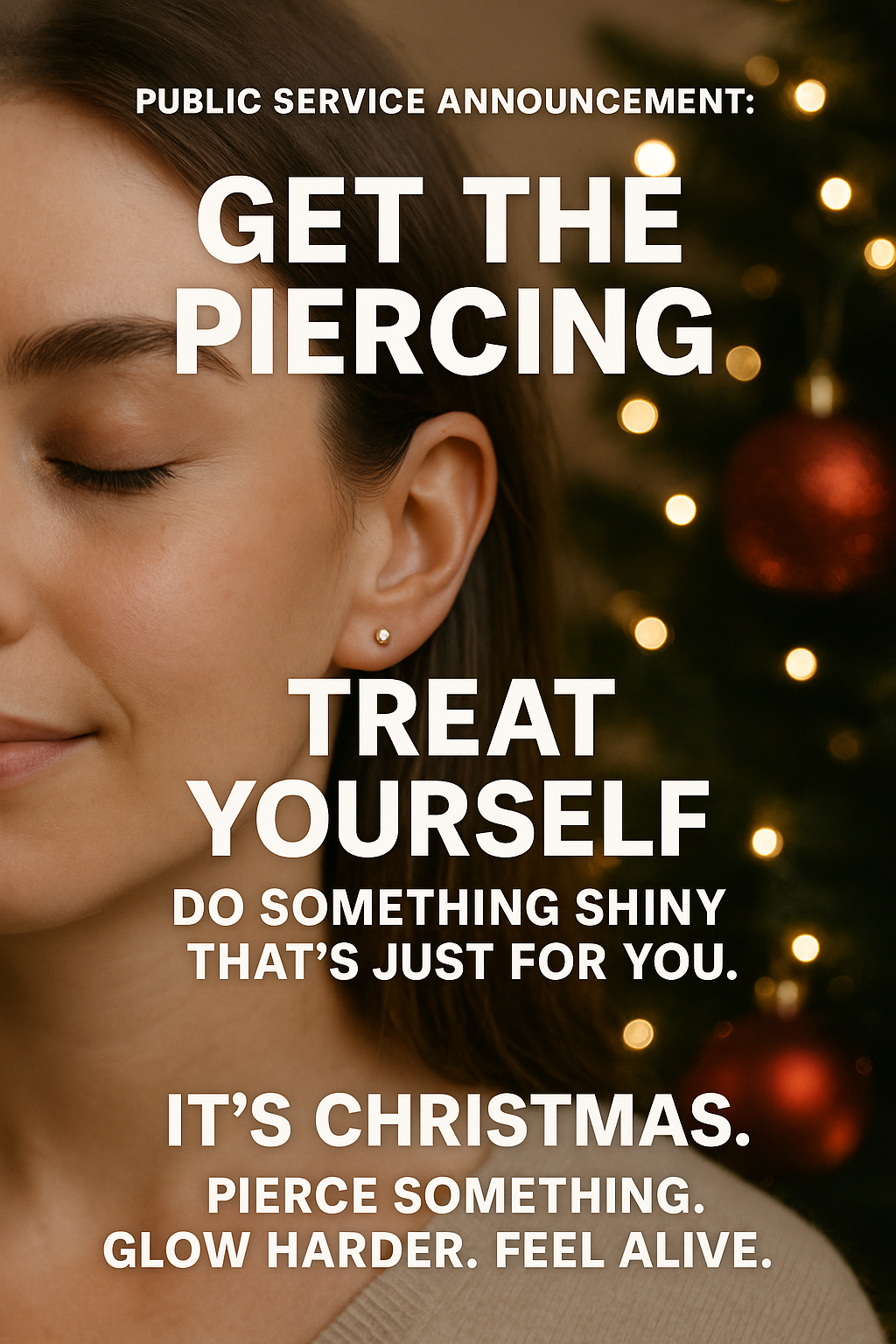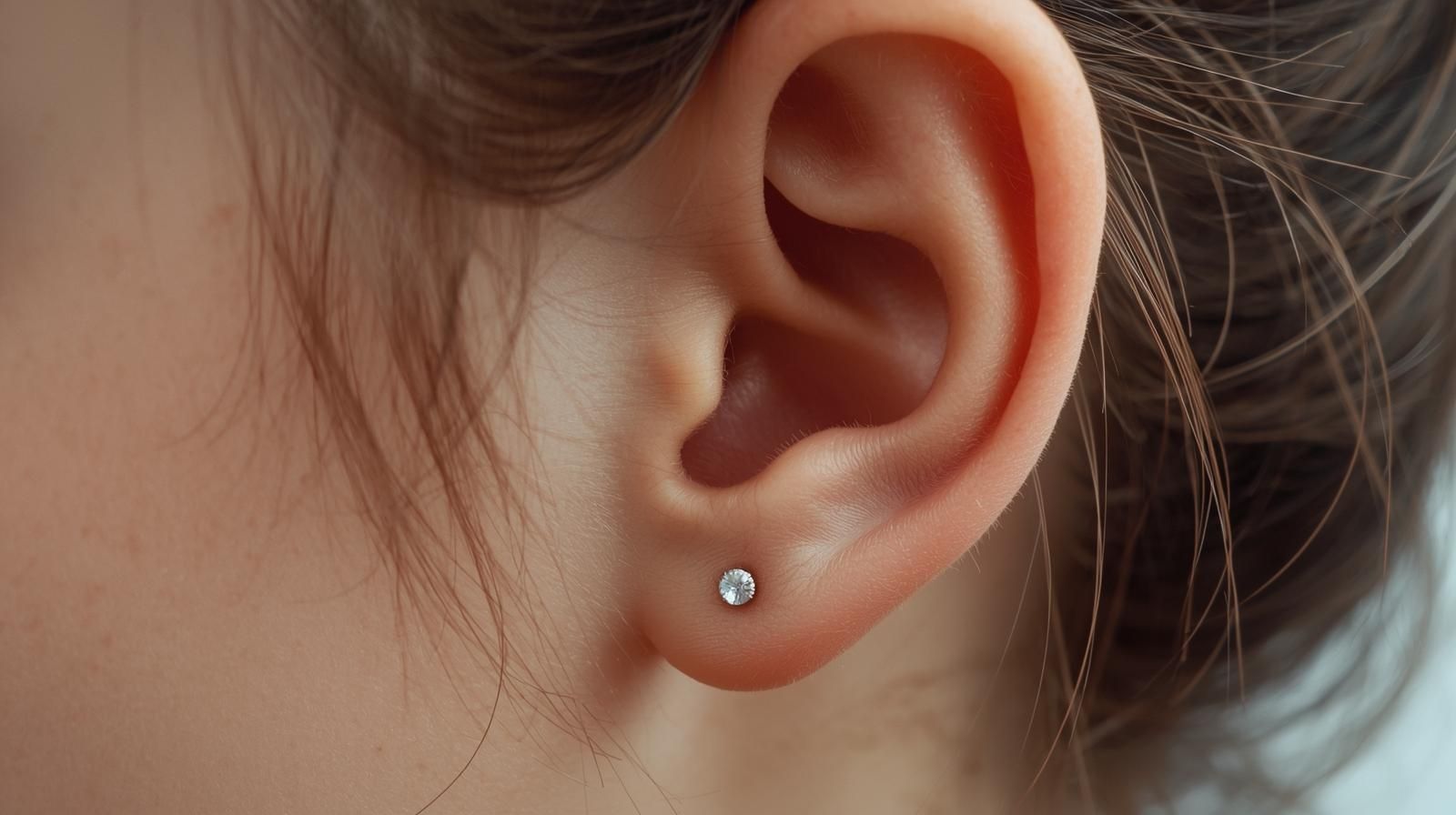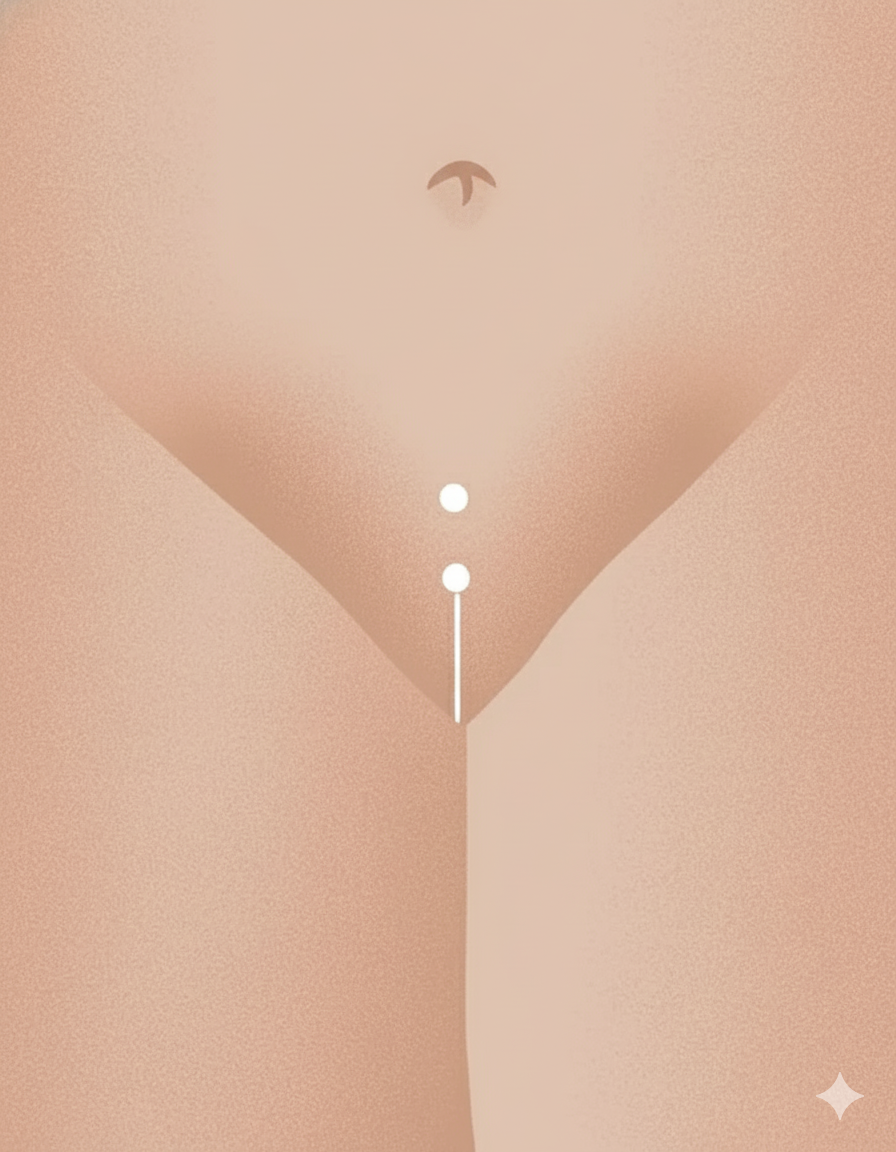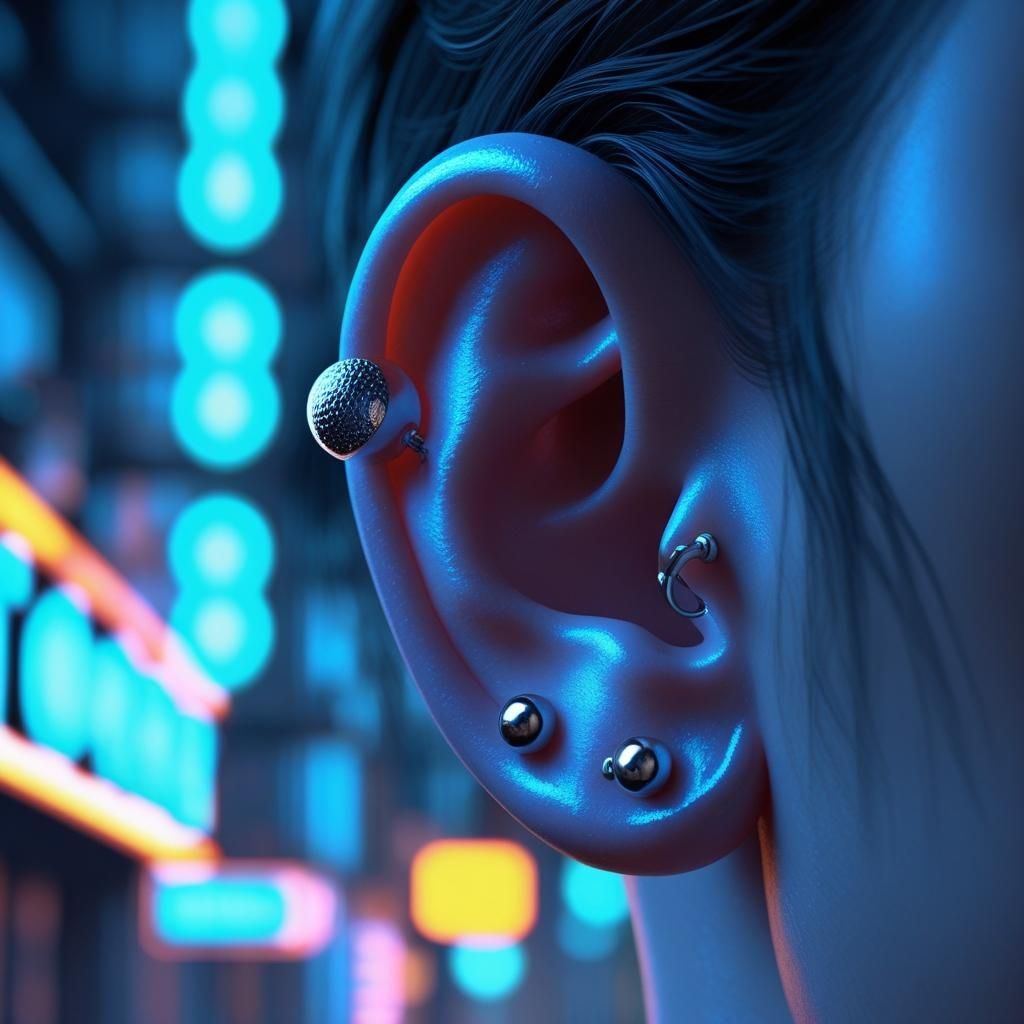Best Piercing Jewellery To Use For A New Ear Piercing
Best Piercing Jewellery to Use for a New Ear Piercing
Choosing the right jewellery for a new piercing is crucial to ensure proper healing and to avoid complications. At Impulse BioWorks & Piercing, located in the heart of Dublin’s Temple Bar, we specialise in precision piercings and body modifications. We understand the importance of selecting safe and suitable jewellery for initial piercings. In this comprehensive guide, we will explore the best piercing jewellery for new piercings, focusing on needle piercings only, and highlighting the safest materials and styles.
Understanding the Importance of Choosing the Right Jewellery
When getting a new piercing, the jewellery you choose plays a critical role in the healing process. The wrong choice can lead to irritation, prolonged healing times, or even infections. Therefore, it is essential to select jewellery that not only looks good but is also safe and conducive to healing. At Impulse BioWorks & Piercing, we have seen numerous cases where incorrect jewellery choices have led to complications such as embedding and hypertrophic scarring, which could have been avoided with the correct initial choice.
Key Considerations for Selecting Initial Piercing Jewellery
Material: Opt for high-quality materials that are less likely to cause allergic reactions or irritations. For example, implant-grade titanium is widely regarded as a top choice due to its hypoallergenic properties and is often recommended by professional piercers worldwide. A case study from our studio involved a client who initially chose a nickel-containing alloy and experienced severe irritation, which resolved only after switching to titanium. This underscores the importance of selecting materials that are biologically inert and skin-friendly, especially for individuals with a history of metal allergies.
Design: Choose jewellery that has a smooth finish and is appropriate for the specific piercing location. Smooth surfaces reduce the risk of the jewellery snagging on clothing or hair, which can irritate the piercing site. We have witnessed clients undergoing prolonged healing times due to inappropriate jewellery designs that caused unnecessary irritation. For example, ornate or textured jewellery, while visually appealing, can exacerbate irritation by catching on fibres or applying uneven pressure to the piercing site.
Size: Ensure the jewellery is the correct size to accommodate swelling and prevent embedding. Inadequate sizing can lead to complications, as seen in instances where clients selected jewellery that was too short, leading to the jewellery becoming embedded in the tissue during the initial swelling phase. Proper sizing is crucial; oversizing can also pose problems, such as increased movement, which can delay healing.
Safe Initial Jewellery Types and Materials
For a new piercing, the jewellery type and material are paramount. Below, we outline the most suitable initial jewellery for various types of piercings, along with the recommended materials. Our recommendations are based on years of experience and feedback from clients who have successfully navigated the healing process.
Earlobe Piercings
- Safe Initial Jewellery Type: Flat-back labret or threadless stud
- Best Material: Implant-grade titanium (ASTM F-136)
Earlobe piercings are one of the most common types of piercings. Flat-back labrets or threadless studs made from implant-grade titanium are ideal for initial earlobe piercings. Titanium is hypoallergenic and lightweight, reducing the risk of reactions. A client testimonial from our Dublin studio highlighted the ease of healing with titanium jewellery, as opposed to previous experiences with less suitable materials that led to irritation and discomfort. Clients have reported that the transition from initial healing to regular wear is smoother when starting with high-quality titanium jewellery, attributing this to the material's minimal interaction with bodily fluids and its resistance to corrosion.
Helix / Upper Cartilage Piercings
- Safe Initial Jewellery Type: Flat-back stud or curved barbell
- Best Material: Implant-grade titanium
Cartilage piercings, such as helix piercings, require jewellery that can adapt to the curvature of the ear. A flat-back stud or a curved barbell made from implant-grade titanium is recommended to minimise irritation and facilitate healing. A study published in the Journal of the American Academy of Dermatology noted that cartilage piercings healed more efficiently with titanium due to its biocompatibility and reduced risk of infection. Additionally, the structural integrity of titanium ensures that the jewellery maintains its shape without causing undue stress on the cartilage.
Forward Helix Piercings
- Safe Initial Jewellery Type: Flat-back stud
- Best Material: Implant-grade titanium
The forward helix is a delicate area, making the flat-back stud an excellent choice. The smooth surface of titanium helps prevent snagging and irritation during the healing phase. We have observed that clients who choose titanium flat-back studs for their forward helix piercings report minimal discomfort and faster healing compared to those who opt for other materials. It's essential to select jewellery with a secure fit that allows for slight swelling and accommodates the natural movement of the ear.
Tragus Piercings
- Safe Initial Jewellery Type: Flat-back stud
- Best Material: Implant-grade titanium
Tragus piercings are located near the ear canal, so it's important to use a flat-back stud to avoid pressure and promote comfort. Titanium's biocompatibility ensures a safer healing process. Our experience has shown that tragus piercings with titanium jewellery have a lower incidence of complications compared to those with stainless steel or other alloys. The smaller gauge typically used in tragus piercings necessitates a material that can withstand wear without degrading, making titanium an ideal choice.
Daith / Rook Piercings
- Safe Initial Jewellery Type: Curved barbell
- Best Material: Implant-grade titanium
Curved barbells are ideal for daith and rook piercings due to their anatomical location. The curve allows for natural movement, reducing stress on the piercing site. Feedback from our clients indicates that titanium curved barbells offer the best comfort and healing outcomes for these types of piercings. The ability of the jewellery to conform to the natural folds of the ear is critical for reducing the risk of mechanical irritation.
Conch Piercings
- Safe Initial Jewellery Type: Flat-back stud
- Best Material: Implant-grade titanium
Conch piercings benefit from flat-back studs that provide stability and ease of cleaning. Titanium's durability makes it a preferred choice for this type of piercing. A recent case at our studio involved a client with a history of sensitive skin who experienced successful healing with a titanium flat-back stud, confirming the material's suitability. The non-reactive nature of titanium allows for a serene healing environment, free from the interference of potential allergens.
Industrial Piercings
- Safe Initial Jewellery Type: Straight barbell
- Best Material: Implant-grade titanium
Industrial piercings require a straight barbell to connect two points on the ear. Titanium's strength and resistance to corrosion make it the best material for these piercings. Our practice has repeatedly shown that titanium barbells result in fewer complications and faster healing times, which is crucial for the more complex industrial piercing. The structural demands of an industrial piercing necessitate a material that can endure the pressure and movement without degrading.
Snug Piercings
- Safe Initial Jewellery Type: Curved barbell
- Best Material: Implant-grade titanium
The snug piercing benefits from a curved barbell that accommodates the natural shape of the ear, reducing tension and allowing for a smoother healing process. Clients often report a noticeable difference in comfort and healing speed when using implant-grade titanium compared to other materials. The snug's unique location requires jewellery that can withstand constant movement and pressure, attributes well-managed by titanium.
Why Implant-Grade Titanium is Recommended
Implant-grade titanium (ASTM F-136) is the gold standard for initial piercing jewellery. Here's why it is so highly recommended:
- Hypoallergenic: Titanium is less likely to cause allergic reactions compared to other metals. Our studio has documented numerous cases where clients with metal sensitivities successfully wore titanium jewellery without experiencing any adverse reactions. The hypoallergenic nature of titanium is due to its pure composition, free from nickel and other common allergens.
- Lightweight: It is comfortable to wear, especially in sensitive areas. Clients often comment on the comfort of titanium jewellery, particularly in areas prone to movement or pressure. The lightweight nature reduces the likelihood of the jewellery pulling and thereby minimises discomfort during daily activities.
- Corrosion-Resistant: Titanium does not tarnish or rust, maintaining its integrity over time. This property ensures that the jewellery remains safe and visually appealing throughout the healing process and beyond. The inert nature of titanium prevents surface degradation, thus maintaining a consistent and safe interface with the skin.
- Biocompatibility: It is used in medical implants, ensuring it is safe for prolonged contact with body tissues. The widespread use of titanium in medical applications underscores its safety and effectiveness as piercing jewellery. Its compatibility with body tissues is evidenced by its minimal inflammatory response, even in prolonged use.
Alternatives to Titanium
While titanium is preferred, there are other materials that can be considered for those who may not be able to use titanium:
- Niobium: Similar to titanium in terms of safety and hypoallergenic properties. Niobium is often coloured through anodising, offering clients a wider range of aesthetic options without compromising safety. The anodising process enhances niobium’s surface properties, making it a vibrant yet safe alternative to titanium.
- Surgical Stainless Steel: Contains nickel, which can be problematic for those with allergies, but is otherwise a budget-friendly option. However, it is crucial for clients to be aware of their metal sensitivities before opting for stainless steel. While often used, stainless steel should ideally be avoided in initial piercings due to its potential for allergenic reactions.
Tips for Caring for New Piercings
Proper aftercare is essential to ensure a smooth healing process. Here are some practical tips for caring for new piercings:
Cleaning
- Saline Solution: Clean the piercing with a sterile saline solution twice daily. This gentle approach helps remove debris and reduces the risk of infection without irritating the piercing. The isotonic nature of saline closely matches the body's natural fluids, aiding in debris removal without disrupting the healing tissue.
- Avoid Alcohol-Based Products: These can dry out the skin and delay healing. We have observed that clients who avoid alcohol-based cleaning products experience fewer issues with dryness and irritation. Alcohol-based products tend to strip natural oils, leading to excessive dryness and potential cracking of the healing tissue.
Handling
- Minimise Touching: Only touch your piercing with clean hands to reduce the risk of infection. Educating clients on the importance of hand hygiene has significantly reduced infection rates in our practice. Germ transfer is a common cause of irritation and infection, so clean hands are vital.
- Avoid Sleeping on the Piercing: This can cause irritation and prolong healing. Clients are encouraged to use specialised pillows or sleep on their backs to alleviate pressure on the piercing. Sleeping on a new piercing can also contribute to misalignment or migration of the jewellery.
Lifestyle Considerations
- Stay Hydrated: Proper hydration aids in overall skin health and healing. We advise clients to maintain adequate water intake, which supports the body's natural healing processes. Hydration is key in maintaining skin elasticity and resilience, which are crucial during the healing phase.
- Avoid Swimming: Pools and open water can introduce bacteria to the piercing site. We recommend avoiding swimming during the initial healing period to prevent potential contamination and infection. Chlorine and other chemicals in pools can also irritate a new piercing, delaying healing.
Common Concerns and Troubleshooting
New piercings can sometimes present challenges. Understanding common concerns can help address issues before they escalate.
Swelling and Redness
- Normal Response: Some swelling and redness are normal initially. Use cold compresses to reduce swelling. Clients have found relief from minor swelling by applying cold compresses for short periods. Swelling is a natural response to tissue trauma and should gradually subside as healing progresses.
- Consult a Professional: If symptoms persist beyond a few days, seek advice from your piercer. We provide follow-up consultations to assess healing progress and address any concerns. Persistent swelling may indicate an underlying issue, such as an allergic reaction or infection, requiring professional evaluation.
Infection Signs
- Indicators: Persistent redness, increased pain, and pus are signs of infection. Early detection and intervention are crucial to prevent complications. Recognising these signs early allows for prompt treatment, preventing escalation and potential scarring.
- Immediate Action: Clean the area promptly and consult a professional. Our studio offers immediate consultations for clients experiencing signs of infection to provide timely care and advice. Timely intervention often involves adjusting aftercare routines or, in some cases, changing the jewellery material.
Jewellery Reactions
- Watch for Irritation: If you suspect a reaction to the jewellery, consider switching to another hypoallergenic material. Our experience shows that prompt action can prevent further complications and promote healing. Early identification and material change can drastically improve healing outcomes and reduce discomfort.
Summary
Choosing the right jewellery for a new piercing is essential for a successful healing process. At Impulse BioWorks & Piercing, we recommend using implant-grade titanium for its hypoallergenic and durable properties. Each piercing type has an optimal jewellery style that helps minimise irritation and promotes healing. Proper aftercare, including cleaning and handling, is also vital for optimal results. By following these guidelines, you can ensure your new piercing heals beautifully and comfortably. If you have any questions or need professional advice, our team in Dublin is always here to help. Employing these best practices will not only enhance your piercing experience but also pave the way for long-lasting satisfaction and aesthetic pleasure.









